Damodaran A. Applied corporate finance
Подождите немного. Документ загружается.


12
12
preferred stock as a part of capital. However, we have to keep the preferred stock portion
fixed, while changing the weights on debt and equity. The debt ratio at which the cost of
capital is minimized is the optimal debt ratio.
In this approach, the effect on firm value of changing the capital structure is
isolated by keeping the operating income fixed and varying only the cost of capital. In
practical terms, this requires us to make two assumptions. First, the debt ratio is
decreased by raising new equity and retiring debt; conversely, the debt ratio is increased
by borrowing money and buying back stock. This process is called recapitalization.
Second, the pre-tax operating income is assumed to be unaffected by the firm’s financing
mix and, by extension, its bond rating. If the operating income changes with a firm's
default risk, the basic analysis will not change, but minimizing the cost of capital may not
be the optimal course of action, since the value of the firm is determined by both the
cashflows and the cost of capital. The value of the firm will have to be computed at each
debt level and the optimal debt ratio will be that which maximizes firm value.
Illustration 8.3: Analyzing the Capital Structure for Disney: March 2004
The cost of capital approach can be used to find the optimal capital structure for a
firm, as we will for Disney in March 2004. Disney had $13,100 million in debt on its
books. The estimated market value of this debt was $12,915 million was added the
present value of operating leases, of $1,753 million to arrive at a total market value for
the debt of $14,668 million.
8
The market value of equity at the same time was $55,101
million; the market price per share was $ 22.26, and there were 2475.093 million shares
outstanding. Proportionally, 21.02% of the overall financing mix was debt, and the
remaining 78.98% was equity.
The beta for Disney's stock in March 2004, as estimated in chapter 7, was 1.2456.
The treasury bond rate at that time was 4%. Using an estimated market risk premium of
4.82%, we estimated the cost of equity for disney to be 10.00%:
Cost of Equity = Riskfree rate + Beta * (Market Premium)
=4.00% + 1.2456 (4.82%) = 10.00%
8
The details of this calculation are in illustration 4.15 in chapter 4.
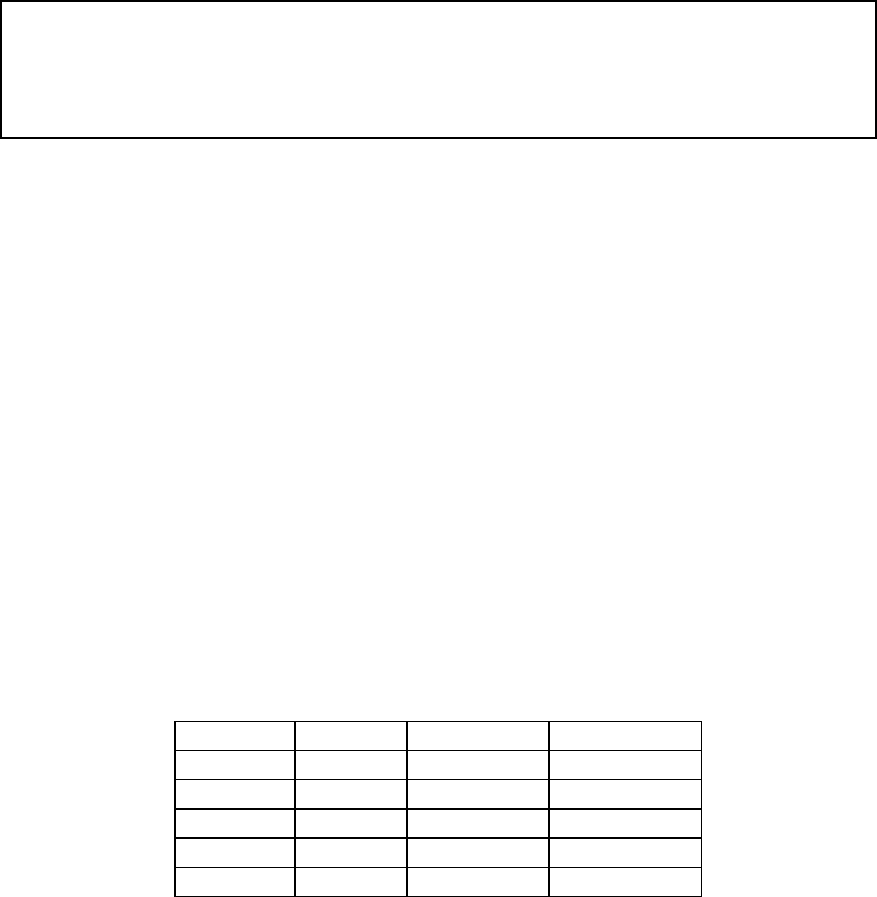
13
13
Disney’s senior debt was rated BBB+. Based upon this rating, the estimated pre-tax cost
of debt for Disney is 5.25%. The tax rate used for the analysis is 37.30%.
Value of Firm = 14,668+ 55,101 = $ 69,769 million
After-tax Cost of debt = Pre-tax interest rate (1- tax rate)
= 5.25% (1- 0.373) = 3.29%
The cost of capital was calculated using these costs and the weights based upon market value:
WACC = Cost of Equity (Equity/(Equity + Debt)) + After-tax Cost of Debt (Debt/(Debt
+Equity))
= 10.00%* [55,101/69.769] + 3.58% *[14,668/69,769] = 8.59%
8.2. ☞: Market Value, Book Value and Cost of Capital
Disney had a book value of equity of approximately $ 16.5 billion. Using the book value
of debt of $ 13.1 billion, estimate the cost of capital for Disney using book value weights.
I. Disney's Cost of Equity and Leverage
The cost of equity for Disney at different debt ratios can be computed using the unlevered
beta of the firm, and the debt equity ratio at each level of debt. We use the levered betas that
emerge to estimate the cost of equity. The first step in this process is to compute the firm’s
current unlevered beta, using the current market debt to equity ratio and a tax rate of 37.30%.
Unlevered Beta = Current Beta / (1 + (1-t) Debt/Equity)
= 1.2456/ (1 + (1-0.373) (14,668/55,101))
= 1.0674
Note that this is the bottom-up unlevered beta that we estimated for Disney in chapter 4,
based upon its business mix. We continued to use the treasury bond rate of 4% and the market
premium of 4.82% to compute the cost of equity at each level of debt. If we keep the tax rate
constant at 37.30%, we obtain the levered betas for Disney in table 8.2.
Table 8.2: Leverage, Betas And The Cost Of Equity
Debt Ratio
D/E Ratio
Levered Beta
Cost of Equity
0.00%
0.00%
1.0674
9.15%
10.00%
11.11%
1.1418
9.50%
20.00%
25.00%
1.2348
9.95%
30.00%
42.86%
1.3543
10.53%
40.00%
66.67%
1.5136
11.30%

14
14
50.00%
100.00%
1.7367
12.37%
60.00%
150.00%
2.0714
13.98%
70.00%
233.33%
2.6291
16.67%
80.00%
400.00%
3.7446
22.05%
90.00%
900.00%
7.0911
38.18%
In calculating the levered beta in this table, we assumed that all market risk is borne by
the equity investors; this may be unrealistic especially at higher levels of debt. We will
also consider an alternative estimate of levered betas that apportions some of the market
risk to the debt:
β
levered
= β
u
[1+(1-t)D/E] - β
debt
(1-t) D/E
The beta of debt is based upon the rating of the bond and is estimated by regressing past
returns on bonds in each rating class against returns on a market index. The levered betas
estimated using this approach will generally be lower than those estimated with the
conventional model.
9
II. Disney's Cost of Debt and Leverage
Several financial ratios are correlated with bond ratings and, ideally, we could
build a sophisticated model to predict ratings. For purposes of this illustration, however,
we use a much simpler version: We assume that bond ratings are determined solely by
the interest coverage ratio, which is defined as:
Interest Coverage Ratio = Earnings before interest & taxes / Interest Expense
We chose the interest coverage ratio for three reasons. First, it is a ratio
10
used by both
Standard and Poor's and Moody's to determine ratings. Second, there is significant
correlation not only between the interest coverage ratio and bond ratings, but also
between the interest coverage ratio and other ratios used in analysis, such as the debt
coverage ratio and the funds flow ratios. Third, the interest coverage ratio changes as a
firm changes is financing mix and decreases as the debt ratio increases. The ratings
9
Consider, for instance, a debt ratio of 40%. At this level the firm’s debt will take on some of the
characteristics of equity Assume that the beta of debt at a 0% debt ratio is 0.40. The equity beta at that debt
ratio can be computed as follows:
Levered beta = 1.0674 (1 + (1-.373)(40/60)- 0.40 (1-.373) (40/60) = 1.335
In the unadjusted approach, the levered beta would have been 1.5136.
10
S&P lists interest coverage ratio first among the nine ratios that it reports for different ratings classes on
its web site.
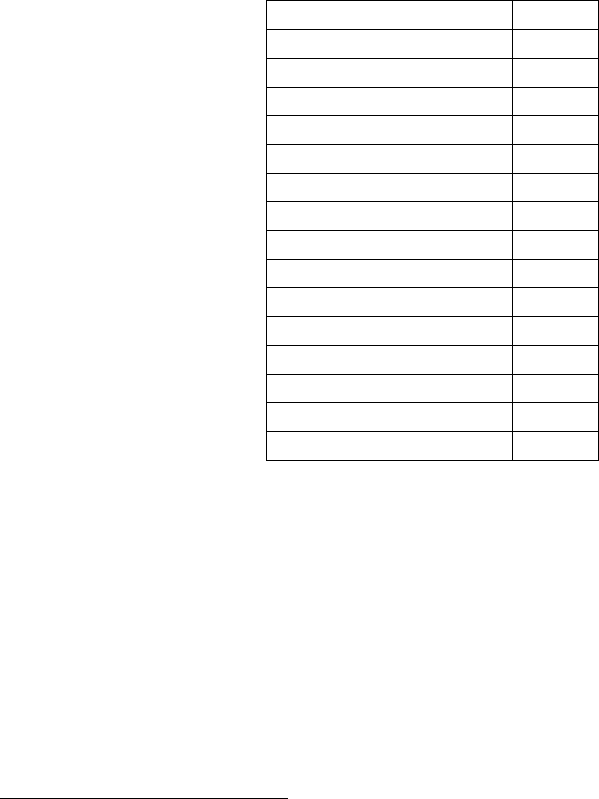
15
15
agencies would argue, however, that subjective factors, such as the perceived quality of
management, are part of the ratings process. One way to build these factors into the
analysis would be to modify the ratings obtained from the financial ratio analysis across
the board to reflect the ratings agencies' subjective concerns
11
.
The data in table 8.3 were obtained based upon an analysis of the interest
coverage ratios of large manufacturing firms in different ratings classes.
Table 8.3: Bond Ratings and Interest Coverage Ratios
Interest Coverage Ratio
Rating
> 8.5
AAA
6.50 - 6.50
AA
5.50 – 6.50
A+
4.25 – 5.50
A
3.00 – 4.25
A-
2.50 – 3.00
BBB
2.05 - 2.50
BB+
1.90 – 2.00
BB
1.75 – 1.90
B+
1.50 - 1.75
B
1.25 – 1.50
B-
0.80 – 1.25
CCC
0.65 – 0.80
CC
0.20 – 0.65
C
< 0.20
D
Source: Compustat
Using this table as a guideline, a firm with an interest coverage ratio of 1.65 would have a
rating of B for its bonds.
The relationship between bond ratings and interest rates in March 2004 was
obtained by looking at the typical default spreads
12
for bonds in different ratings classes.
Table 8.4 summarizes the interest rates/rating relationship and reports the spread for these
11
For instance, assume that a firm's current rating is AA, but that its financial ratios would result in an A
rating. It can then be argued that the ratings agencies are, for subjective reasons, rating the company one
notch higher than the rating obtained from a purely financial analysis. The ratings obtained for each debt
level can then be increased by one notch across the board to reflect these subjective considerations.
12
These default spreads were estimated from bondsonline.com, a service that provides, among other data
on fixed income securities, updated default spreads for each ratings class.

16
16
bonds over treasury bonds and the resulting interest rates, based upon the treasury bond
rate of 4%.
Table 8.4: Bond Ratings And Market Interest Rates, March 2004
Rating
Typical default spread
Market interest rate on debt
AAA
0.35%
4.35%
AA
0.50%
4.50%
A+
0.70%
4.70%
A
0.85%
4.85%
A-
1.00%
5.00%
BBB
1.50%
5.50%
BB+
2.00%
6.00%
BB
2.50%
6.50%
B+
3.25%
7.25%
B
4.00%
8.00%
B-
6.00%
10.00%
CCC
8.00%
12.00%
CC
10.00%
14.00%
C
12.00%
16.00%
D
20.00%
24.00%
Source: bondsonline.com
Since Disney’s capacity to borrow is determined by its earnings power, we will begin by
looking at the company’s income statements in 2002 and 2003 in table 8.5. In 2003,
Disney had operating income of $2.713 billion and net income of $1,267 billion.
Table 8.5: Disney’s Income Statement for2002 & 2003
2003
2002
Revenues
27061
25329
- Operating expenses (other than depreciation)
23289
21924
EBITDA
3772
3405
- Depreciation and Amortization
1059
1021
EBIT
2713
2384
- Interest Expenses
666
708
+ Interest Income
127
255
Taxable Income
2174
1931
- Taxes
907
695
Net Income
1267
1236
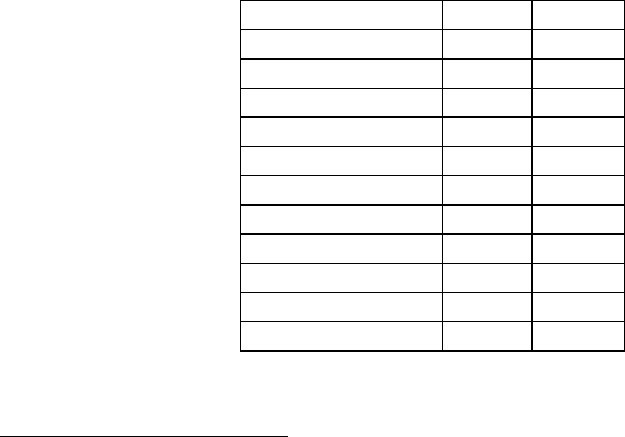
17
17
Based upon the earnings before interest and taxes (EBIT) of $2,713 million and
interest expenses of $ 666 million, Disney has an interest coverage ratio of 4.07 and
should command a rating of A-, a notch above it’s actual rating of BBB+. This income
statement, however, is based upon treating operating leases as operating expenses. In
chapter 4, we argued that operating leases should be considered part of debt and
computed the present value of Disney’s lease commitments to be $1,753 million.
Consequently, we have to adjust the EBIT and EBITDA for the imputed interest expense
on Disney’s operating leases
13
; this results in an increase of $ 92 million in both numbers
– to $ 2,805 million in EBIT and $ 3,864 million in EBITDA.
Adjusted EBIT = EBIT + Pre-tax cost of debt * Present value of operating leases
= 2713 + .0525 * 1753 = 2805
Note that 5.25% is Disney’s current pre-tax cost of debt.
Finally, to compute Disney’s ratings at different debt levels, we redo the operating
income statement at each level of debt, compute the interest coverage ratio at that level of
debt and find the rating that corresponds to that level of debt. For example, table 8.6
estimates the interest expenses, interest coverage ratios and bond ratings for Disney at 0%
and 10% debt ratios, at the existing level of operating income.
Table 8.6: Effect of Moving to Higher Debt Ratios: Disney
D/(D+E)
0.00%
10.00%
D/E
0.00%
11.11%
$ Debt
$0
$6,977
EBITDA
$3,882
$3,882
Depreciation
$1,077
$1,077
EBIT
$2,805
$2,805
Interest
$0
$303
Pre-tax Int. cov
∞
9.24
Likely Rating
AAA
AAA
Pre-tax cost of debt
4.35%
4.35%
13
Multiplying the pre-tax cost of debt by the present value of operating leases yields an approximation.
The full adjustment would require us to add back the entire operating lease expense and to subtract out the
depreciation on the leased asset.
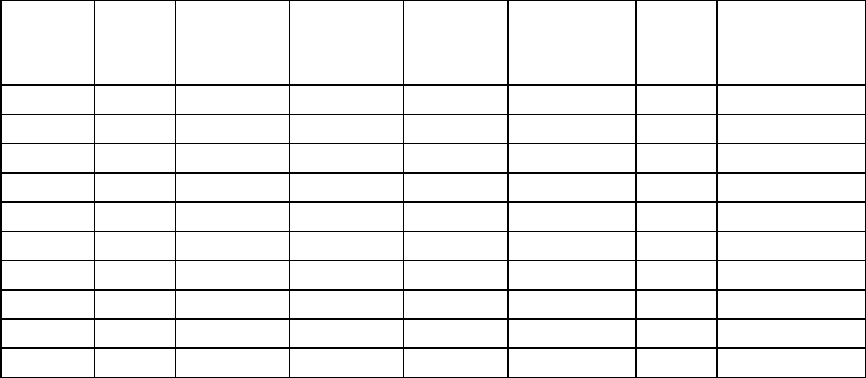
18
18
The dollar debt is computed to be 10% of the current value of the firm, which we
compute by adding the current market values of debt ($14,668) and equity ($55,101):
Dollar Debt at 10% debt ratio = .10 (55,101 + 14,668) = $ 6,977 million
Note that the EBITDA and EBIT remain fixed as the debt ratio changes. We ensure this
by using the proceeds from the debt to buy back stock. This is called a recapitalization,
where the assets of the firm remain unchanged but the financing mix is changed. This
allows us to isolate the effect of just changing the debt ratio.
There is circular reasoning involved in estimating the interest expense. The
interest rate is needed to calculate the interest coverage ratio, and the coverage ratio is
necessary to compute the interest rate. To get around the problem, we began our analysis
by assuming that you could borrow $ 6,977 billion at the AAA rate of 4.35%; we then
computed an interest expense and interest coverage ratio using that rate, and estimated a
new rating of AAA for Disney. This process is repeated for each level of debt from 10%
to 90%, and the after-tax costs of debt are obtained at each level of debt in Table 8.7.
Table 8.7: Disney: Cost of Debt and Debt Ratios
Debt
Ratio
Debt
Interest
expense
Interest
Coverage
Ratio
Bond
Rating
Interest rate
on debt
Tax
Rate
Cost of Debt
(after-tax)
0%
$0
$0
∞
AAA
4.35%
37.30%
2.73%
10%
$6,977
$303
9.24
AAA
4.35%
37.30%
2.73%
20%
$13,954
$698
4.02
A-
5.00%
37.30%
3.14%
30%
$20,931
$1,256
2.23
BB+
6.00%
37.30%
3.76%
40%
$27,908
$3,349
0.84
CCC
12.00%
31.24%
8.25%
50%
$34,885
$5,582
0.50
C
16.00%
18.75%
13.00%
60%
$41,861
$6,698
0.42
C
16.00%
15.62%
13.50%
70%
$48,838
$7,814
0.36
C
16.00%
13.39%
13.86%
80%
$55,815
$8,930
0.31
C
16.00%
11.72%
14.13%
90%
$62,792
$10,047
0.28
C
16.00%
10.41%
14.33%
There are two points to make about this computation. We assume that at every
debt level, all existing debt will be refinanced at the new interest rate that will prevail
after the capital structure change. For instance, Disney's existing debt, which has a BBB+
rating, is assumed to be refinanced at the interest rate corresponding to a BBB rating
when Disney moves to a 30% debt ratio. This is done for two reasons. The first is that
existing debt-holders might have protective puts that enable them to put their bonds back

19
19
to the firm and receive face value.
14
The second is that the refinancing eliminates “wealth
expropriation” effects –– the effects of stockholders expropriating wealth from
bondholders when debt is increased, and vice versa, when debt is reduced. If firms can
retain old debt at lower rates, while borrowing more and becoming riskier, the lenders of
the old debt will lose wealth. If we lock in current rates on existing bonds and recalculate
the optimal debt ratio, we will allow for this wealth transfer.
15
While it is conventional to leave the marginal tax rate unchanged as the debt ratio
is increased, we adjust the tax rate to reflect the potential loss of the tax benefits of debt
at higher debt ratios, where the interest expenses exceed the earnings before interest and
taxes. To illustrate this point, note that the earnings before interest and taxes at Disney is
$2,805 million. As long as interest expenses are less than $ 2,703 million, interest
expenses remain fully tax deductible and earn the 37.30% tax benefit. For instance, at a
40% debt ratio, the interest expenses are $1,865 million and the tax benefit is therefore
37.30% of this amount. At a 50% debt ratio, however, the interest expenses balloon to
$3,349 million, which is greater than the earnings before interest and taxes of $ 2,805
million. We consider the tax benefit on the interest expenses up to this amount:
Maximum Tax Benefit = EBIT * Marginal Tax Rate = $2,805 million * .373 = $
1,046 million
As a proportion of the total interest expenses, the tax benefit is now only 31.24%:
Adjusted Marginal Tax Rate = Maximum Tax Benefit / Interest Expenses =
$1046/$3,349= 31.24%
This, in turn, raises the after-tax cost of debt. This is a conservative approach, since
losses can be carried forward. Given that this is a permanent shift in leverage, it does
make sense to be conservative.
III. Leverage and Cost of Capital
Now that we have estimated the cost of equity and the cost of debt at each debt
level, we can compute Disney’s cost of capital. This is done for each debt level in Table
14
If they do not have protective puts, it is in the best interests of the stockholders not to refinance the debt
(as in the leveraged buyout of RJR Nabisco) if debt ratios are increased.
15
This will have the effect of reducing interest cost, when debt is increased, and thus interest coverage
ratios. This will lead to higher ratings, at least in the short term, and a higher optimal debt ratio.
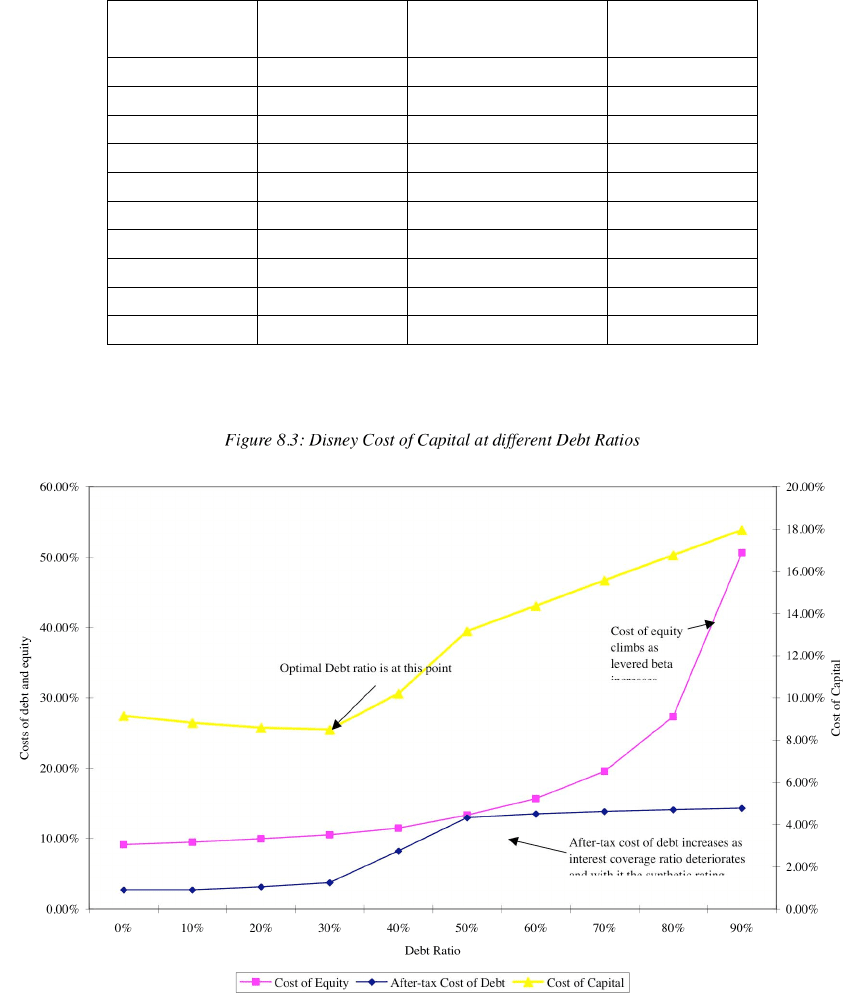
20
20
8.8. The cost of capital, which is 9.15%, when the firm is unlevered, decreases as the firm
initially adds debt, reaches a minimum of 8.50% at 30% debt and then starts to increase
again.
Table 8.8: Cost of Equity, Debt and Capital, Disney
Debt Ratio
Cost of Equity
Cost of Debt (after-
tax)
Cost of Capital
0%
9.15%
2.73%
9.15%
10%
9.50%
2.73%
8.83%
20%
9.95%
3.14%
8.59%
30%
10.53%
3.76%
8.50%
40%
11.50%
8.25%
10.20%
50%
13.33%
13.00%
13.16%
60%
15.66%
13.50%
14.36%
70%
19.54%
13.86%
15.56%
80%
27.31%
14.13%
16.76%
90%
50.63%
14.33%
17.96%
The optimal debt ratio is shown graphically in Figure 8.3.
To illustrate the robustness of this solution to alternative measures of levered betas, we
re-estimate the costs of debt, equity and capital under the assumption that debt bears
some market risk, and the results are summarized in Table 8.9.
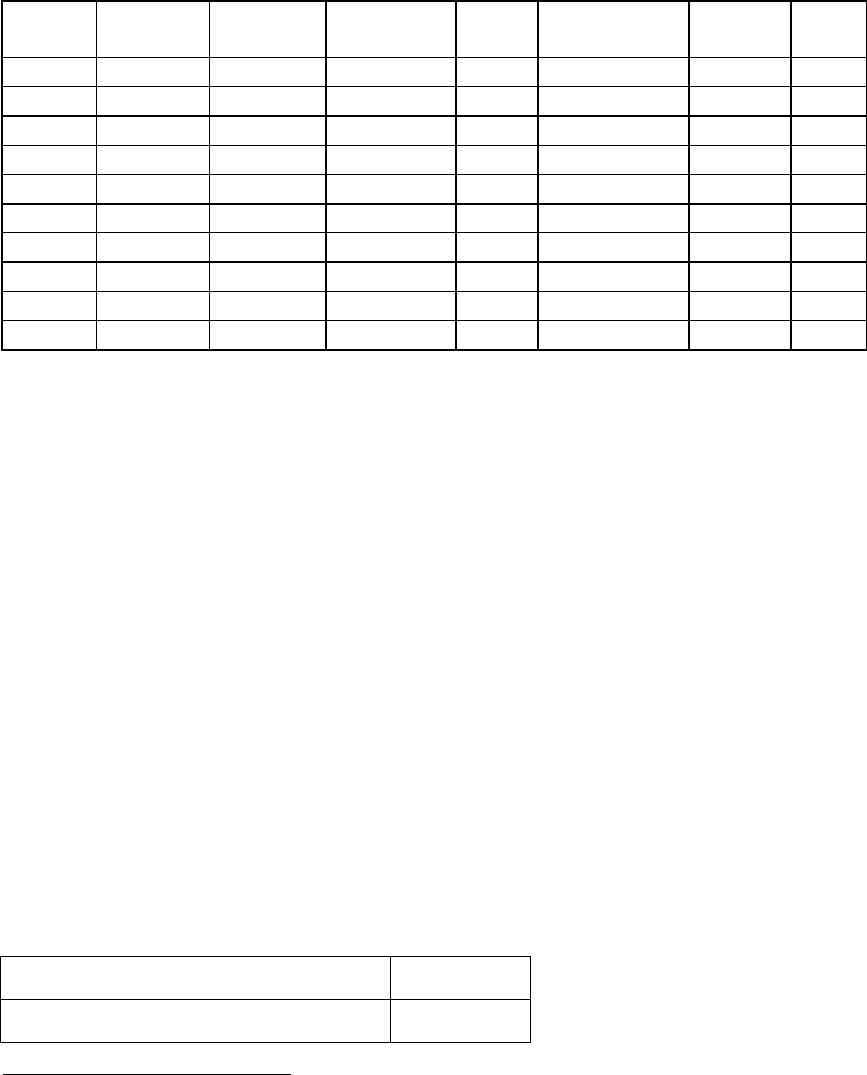
21
21
Table 8.9: Costs of Equity, Debt and Capital with Debt carrying Market Risk- Disney
Debt
Ratio
Beta of
equity
Cost of
Equity
Interest rate
on debt
Tax
Rate
Cost of Debt
(after-tax)
Beta of
debt
Cost of
Capital
0%
1.07
9.15%
4.35%
37.30%
2.73%
0.02
9.15%
10%
1.14
9.50%
4.35%
37.30%
2.73%
0.02
8.82%
20%
1.23
9.91%
5.00%
37.30%
3.14%
0.05
8.56%
30%
1.33
10.39%
6.00%
37.30%
3.76%
0.10
8.40%
40%
1.37
10.59%
12.00%
31.24%
8.25%
0.41
9.65%
50%
1.43
10.89%
16.00%
18.75%
13.00%
0.62
11.94%
60%
1.63
11.86%
16.00%
15.62%
13.50%
0.62
12.84%
70%
1.97
13.48%
16.00%
13.39%
13.86%
0.62
13.74%
80%
2.64
16.72%
16.00%
11.72%
14.13%
0.62
14.64%
90%
4.66
26.44%
16.00%
10.41%
14.33%
0.62
15.54%
If the debt holders bear some market risk
16
, the cost of equity is lower at higher levels of
debt and Disney’s optimal debt ratio is still 30%, which is unchanged from the optimal
calculated under the conventional calculation of the levered beta.
IV. Firm Value and Cost of Capital
The reason for minimizing the cost of capital is that it maximizes the value of the
firm. To illustrate the effects of moving to the optimal on Disney’s firm value, we start
off with a simple valuation model, designed to value a firm in stable growth.
Firm Value = Cashflow to Firm (1 + g) / (Cost of Capital -g)
where
g = Growth rate in the cashflow to the firm (in perpetuity)
We begin by computing Disney’s current free cash flow using its current earnings before
interest and taxes of $2,805 million, its tax rate of 37.30%, and its reinvestment in 1998
in working capital and net fixed assets:
EBIT (1- tax rate) = 2805 (1 – 0.373) =
$ 1,759
+ Depreciation & Amortization =
$ 1,077
16
To estimate the beta of debt, we used the default spread at each level of debt, and assumed that 25% this
risk is market risk. Thus, at a C rating, the default spread is 12%. Based upon the market risk premium of
4.82% that we used elsewhere, we estimated the beta at a C rating to be:
Imputed Debt Beta at a C rating =(12%/4.82%)*0.25 = 0.62
The assumption that 25% of the default risk is market risk is made to ensure that at a D rating, the beta of
debt (1.02) is roughly equal to the unlevered beta of Disney (1.09).
